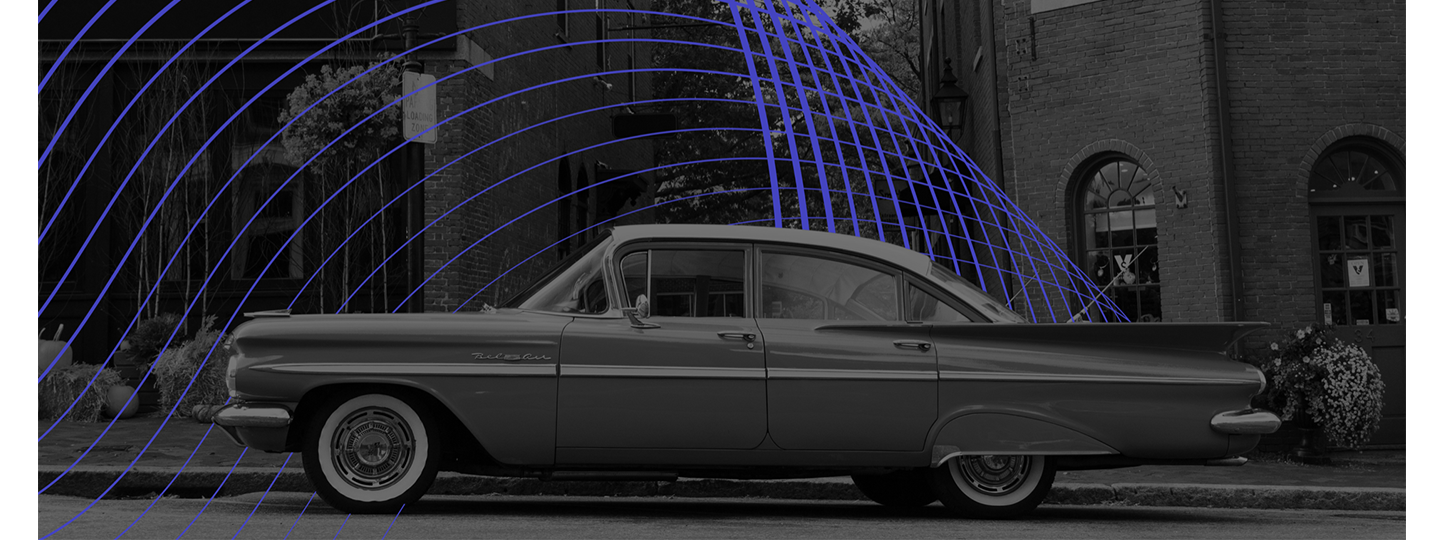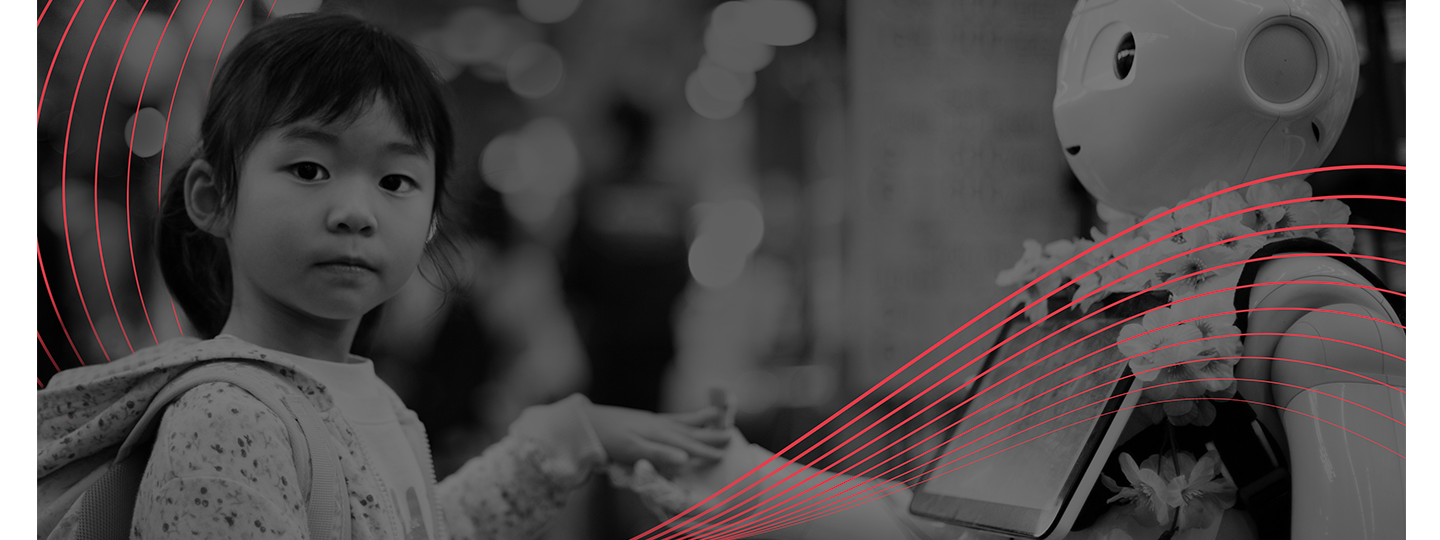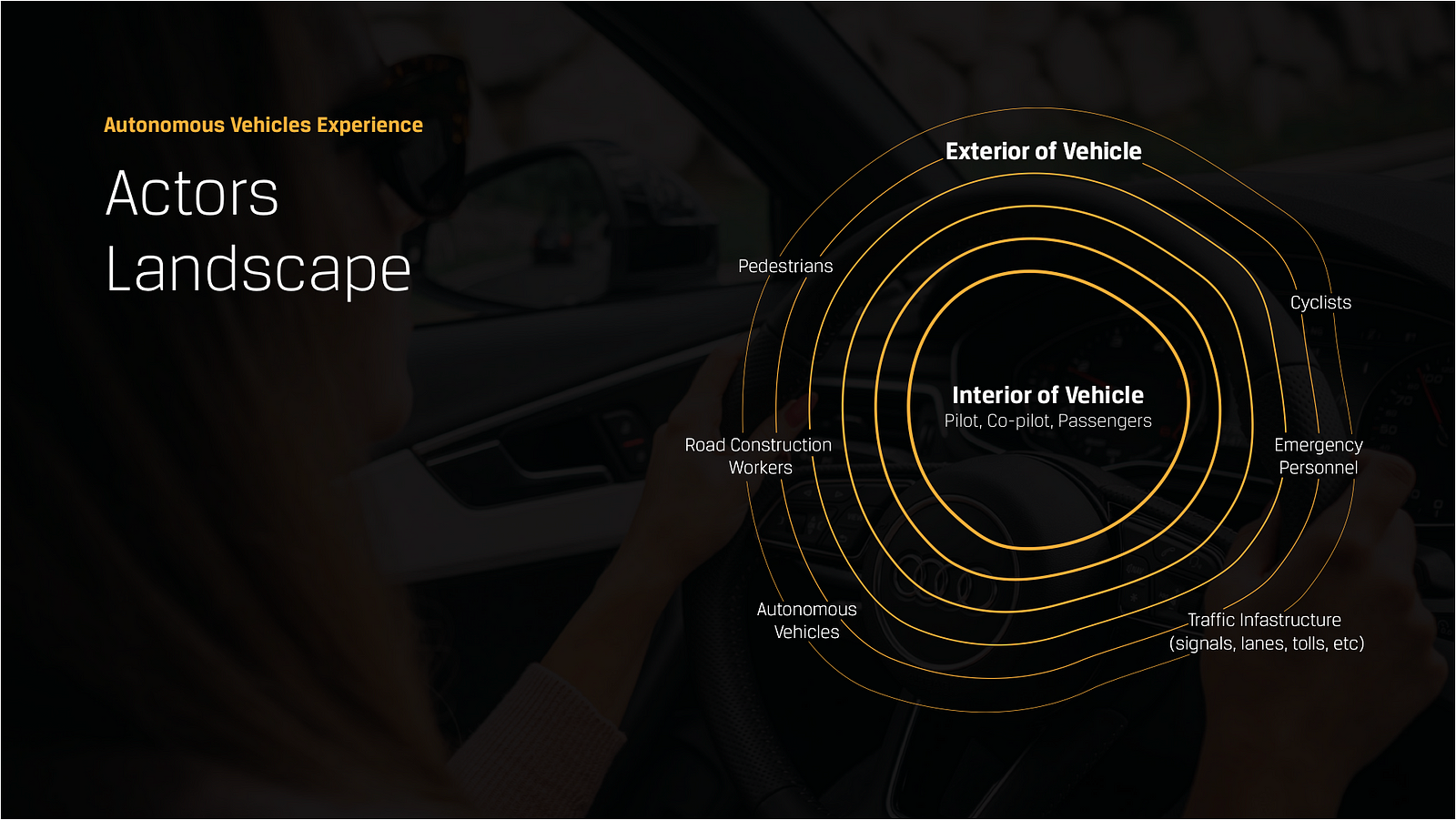Five Design Fundamentals for the New Designated Driver
Autonomous vehicles are steadily becoming more capable, shifting the traditional driver role from active human piloting to passive monitoring. As AV technology continues to advance, social acceptance and driver adaptation will depend on designing experiences around trust, comfort, and control.
At Punchcut, we work with mobility companies around the world to research and design solutions that envision the path for innovation and implementation. Through our partnerships, we have identified five key fundamentals for designing and deploying driverless experiences.
“It’s a pretty exciting moment in the history of the path to wide scale [autonomous vehicle] deployment and having the first production car with no driver controls.
— Dan Ammann, GM President (January 2019)
1 / Set Expectations
Succeed in setting the right expectations.
Due to the hype of AV, many potential users have unrealistic expectations of autonomous vehicles, leading to disappointment. Create an experience that communicates the strengths and weaknesses of this emerging technology. Then, prepare them with the right frame of mind.
“I think we will see these cars being extremely safe, they are not going to take risks, they aren’t going to speed, but at the same time they will drive with the flow of traffic. They will do what’s safe.”
–Danny Shapiro, Sr. Director of Nvidia’s Automotive Unit
Let’s Face it AV’s are slow
Safety is paramount for autonomous vehicles and currently, full automation vehicles drive slower those driven by humans. Today, AVs hesitate and use extra caution if there is any potential object in their path. Slowness can also be caused by avoiding certain traffic issues and taking circuitous routes that might not otherwise be needed when a human pilot is in full control.
Find ways to teach users about the challenges around speed and fluidity of the drive. Productively engage and occupy users to optimize this newfound space and time.
Design Considerations
- Establish a clear safety routine.
- Take delays into account.
- Provide driving details up front.
- Enable driver task switching.
2 / Surpass Novelty
Take it from novel to legit.
Initially, autonomous vehicles will appear as a novelty to mainstream audiences. Legitimize the technology by defining the needs of potential users and align the strengths of the experience with their needs.
“I can’t wait for self-driving cars to be here. My idea is that I’d have a profile and a car would be dispatched knowing my kids are so-and-so. It would take care of transporting my family based on our needs.”
— California Resident, Punchcut mobility user study
Address real user needs
The motivation and interest in AV may be different for various users, whether it’s for productively conducting business meetings on the way to work, taking grandpa to the doctor, or freeing up mom from shuttling pre-teens to an after school practice. When this transportation pattern becomes a foundational part of user’s lives, it’s no longer perceived as novel but instead a necessity.
Make it clear to users what value they get from AV and how they can reclaim valuable time which would be ordinarily spent focused on driving everyday.
Design Considerations
- Communicate values of the AV experience.
- Create a personalized experience.
- Acknowledge user preferences.
3 / Demonstrate Trust
Drivers are shifting from pilot to monitor.
The idea of removing a human driver remains unsettling to the mainstream. Statistical data about safety and congestion will not be enough to convince users that a self-driving car behaves better than a human driver. Build confidence by repeatedly exposing users to intentionally crafted positive interactions, thus leading to familiarization for a new standard.
“Use of driver-assist technology like lane-keeping software and automatic emergency braking make drivers 68% more likely to trust semi-autonomous cars.”
– L.A. Times, “The American public is still very afraid of self-driving cars, survey finds”
Data is not enough to build trust.
We recognize importance and value of data on the performance, safety, and systems of self-driving cars from countless reports. Yet, the fact still remains that in order to win the trust of users, an AV must have the equivalent (if not better) sensibility than that of a human. Showing the user over and over that he can trust AV to keep him safe will be a gigantic hurdle. Allow users to actively engage first-hand and share these positive riding experiences.
Design Considerations
- Use transparent, human messaging.
- Communicate to earn trust.
- Set the right expectations.
4 / Prepare for a Multiplayer Experience
Design for everyone, everything and everywhere.
Self-driving cars roaming the streets will affect all of us and everything around us. Make this an opportunity to design for interactions that exist both inside and outside of AVs: riders, pedestrians, cyclists, animals, other vehicles, traffic conditions, and surrounding transportation infrastructure.
Identify the primary passenger
While there may not be a need for a human driver in a “full automation” vehicle, one passenger may need to be designated as the primary passenger. Our mobility user research has shown that when traveling in groups, riders need a primary decision-maker for safety protocol or in the event of an emergency. Although the primary passenger would not be technically “operating” the vehicle, he may be called upon to engage when necessary.
Design Considerations
- Designate one passenger to take control.
- Communicate updates clearly throughout the trip.
- Provide a clear safety procedure.
5 / Communicate Just Enough
Less is more.
Both over-communication as well as too little communication in-vehicle can lead to poor experiences. Balance the amount of communication needed to provide all necessary and helpful information while being careful of not to overload the user.
“The self-driving cars of the future will need to be transparent about what their intentions are, how they make decisions, and what they see.”
— Carol Reiley, Co-founder at Drive.ai
Responsibly Communicate
Communicate to passengers in both subtle and explicit ways. Unfamiliar beeps, chimes, and alerts can cause confusion for passengers. This is especially problematic in moments of urgency. Provide verbal explanations upfront about the purpose of an alert until it’s acknowledged and familiar. At the same time, avoid the pitfall of communicating less critical information too frequently. This can be annoying to the passenger, and eventually lead to a habit of ignoring in-vehicle communication.
Design Considerations
- Help passengers engage safely with their vehicle.
- Assist passengers in anticipating what’s next.
- Clearly message vehicle actions before they occur.
The Future of Autonomous Vehicles Depends on Insightful UX Design
The creation of autonomous vehicles (self-driving cars) is a major technological achievement. But, technology alone is not enough to create the seamless, intuitive vehicle user experiences of the future. Strategic user-centered experience design (across physical, digital and virtual contexts) will be the key to delivering vehicle experiences that successfully evolve social acceptance and transition consumers into this new era of transportation.We have found these five fundamentals to be a good starting point when addressing the design of autonomous vehicle HMI (human machine interfaces).
- Set expectations
- Surpass Novelty
- Demonstrate Trust
- Prepare for a Multiplayer Experience
- Communicate Just Enough
Each point helps to remind us that even though autonomous systems will automate the future, humans still desire independence and control. And as automation simplifies tasks, we as designers must build trust and afford better value in new autonomous vehicle experiences in ways that facilitate co-operation and enhance humanity.
A Punchcut Perspective
Contributors: David Schrimp, Joy Wong Daniels, Nick Munro, Ken Olewiler
© Punchcut LLC, All rights reserved.








